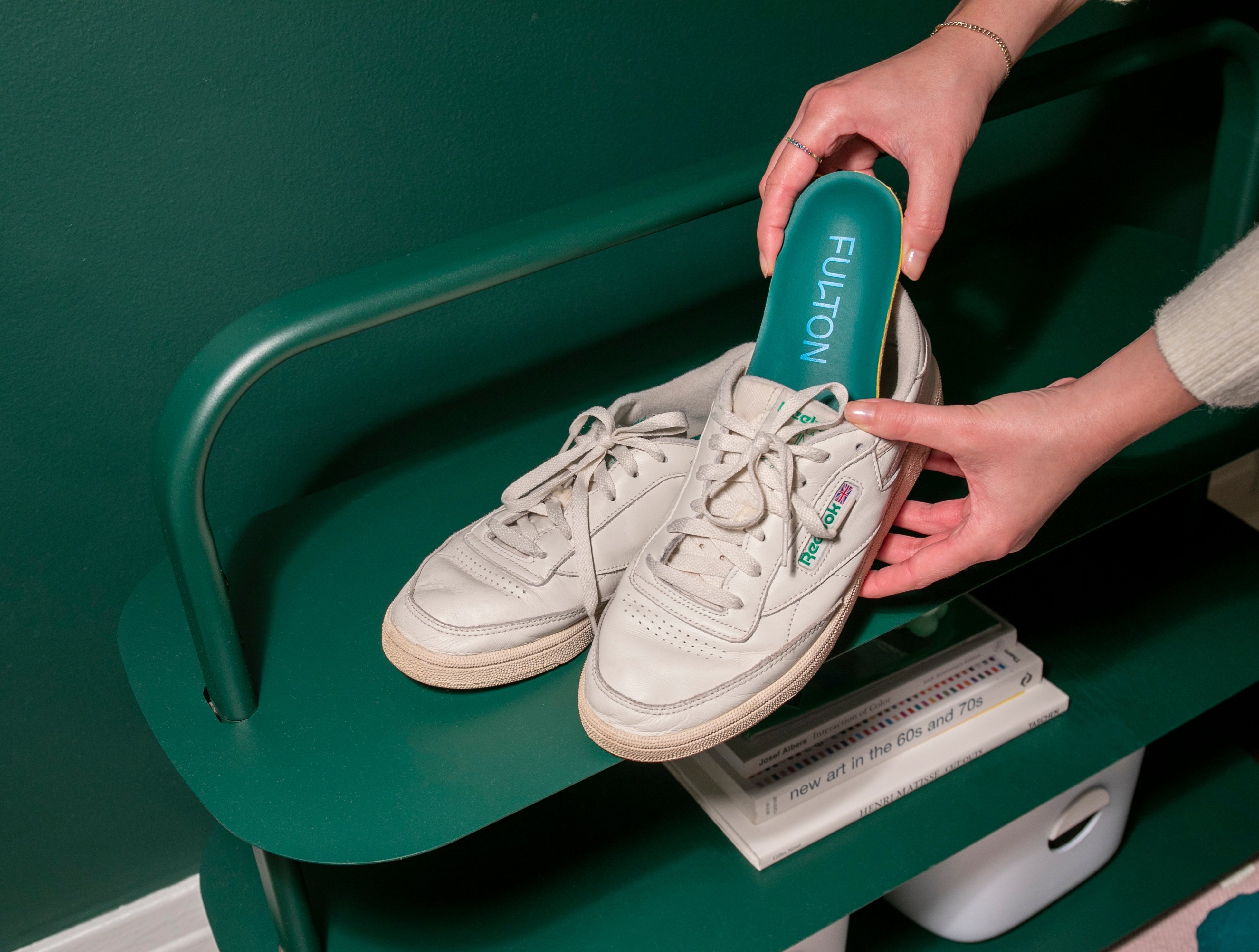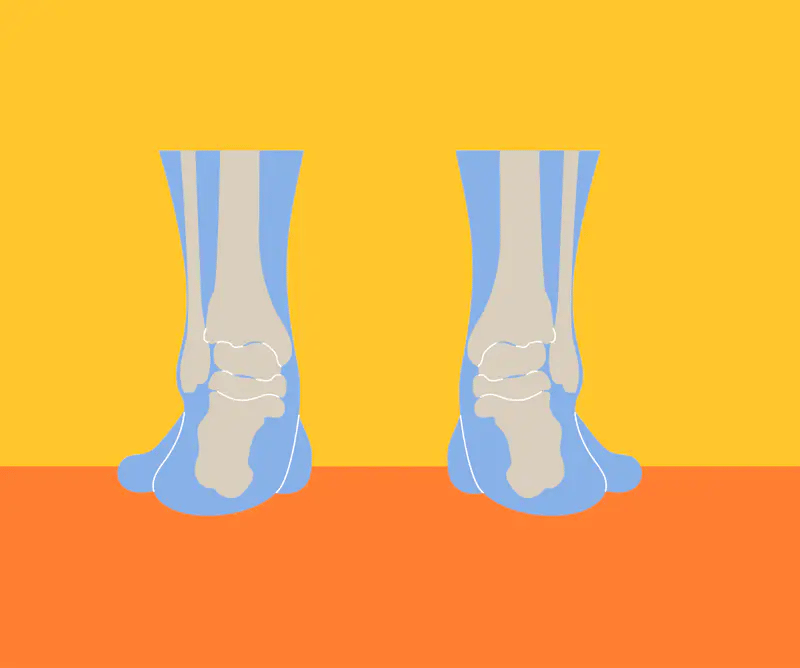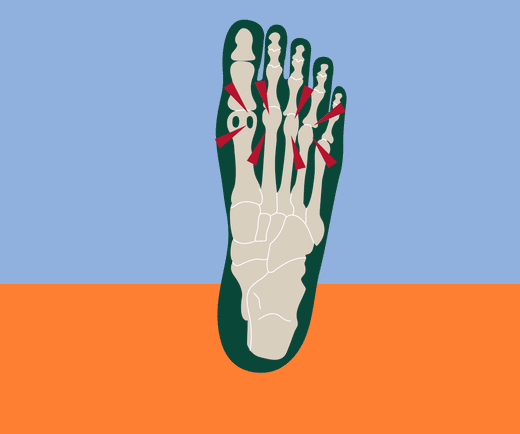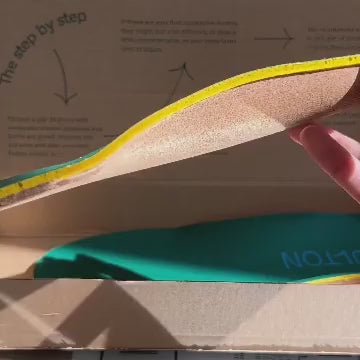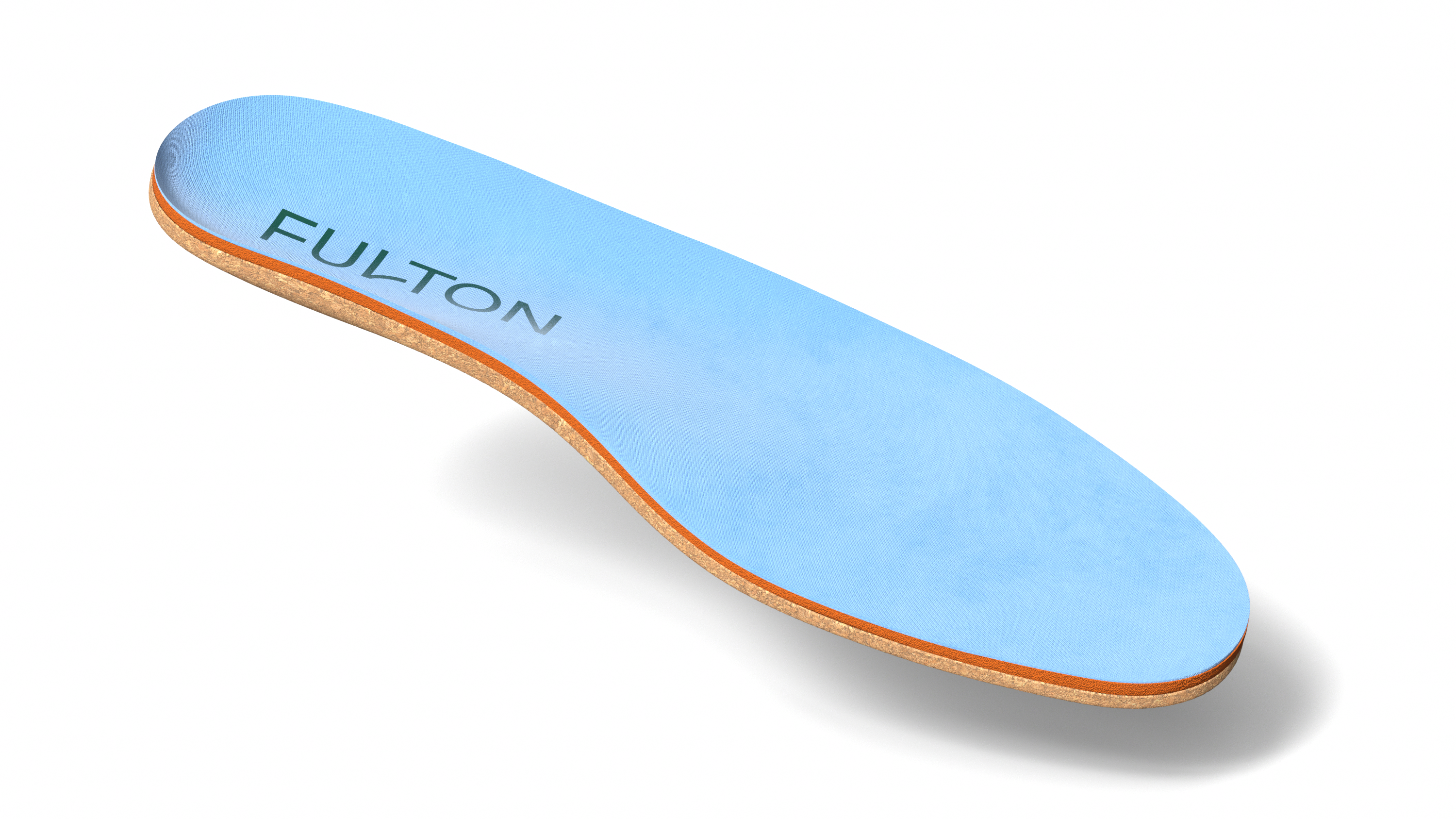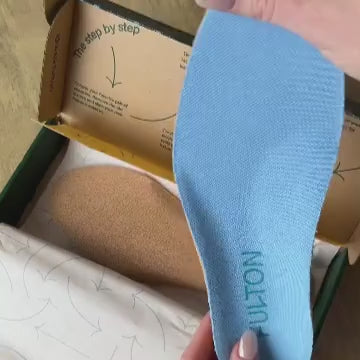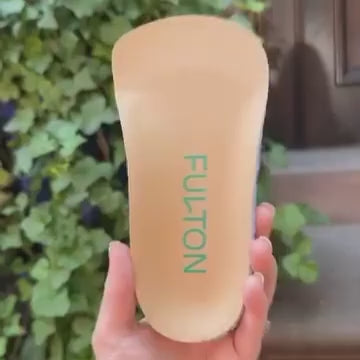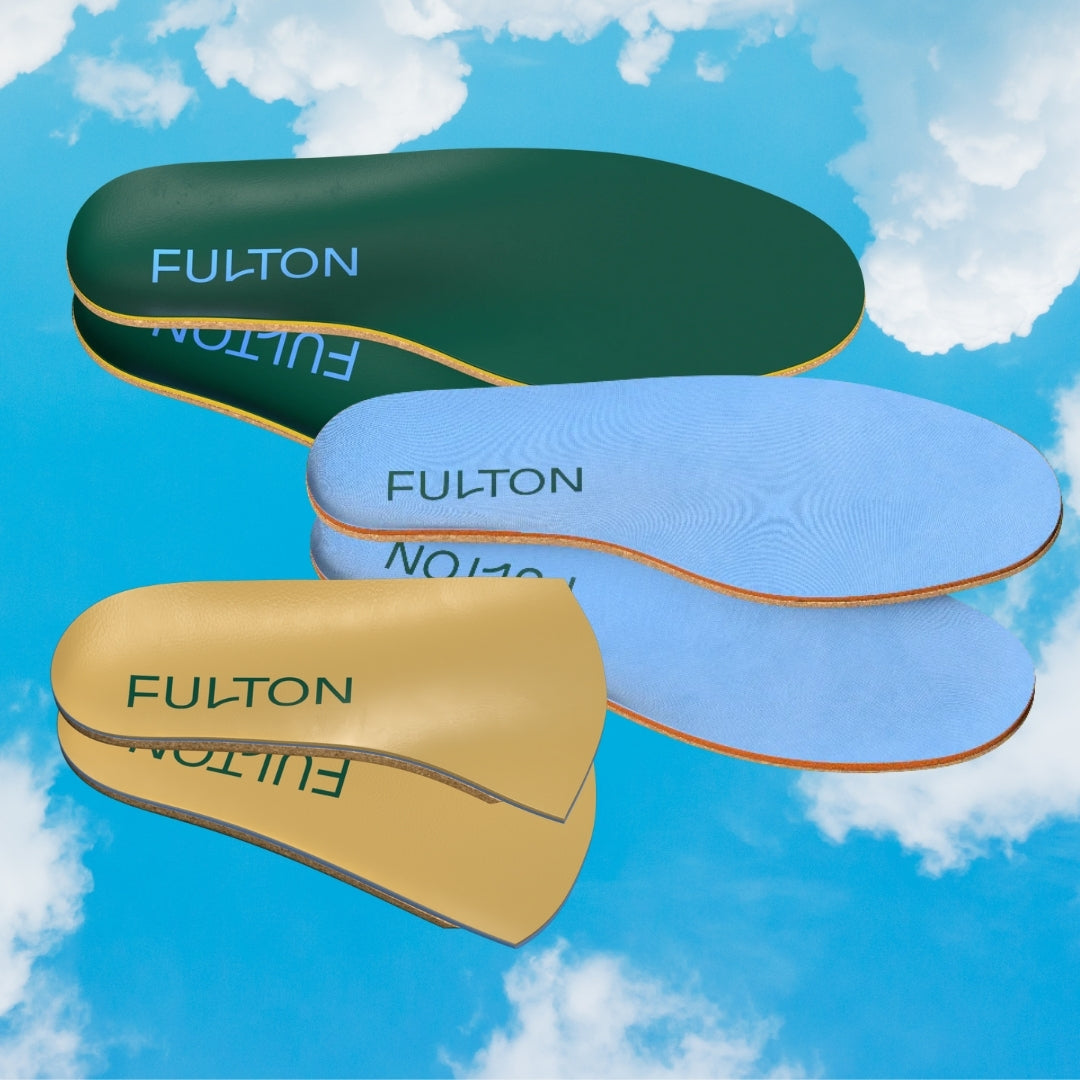What is Plantar Fasciitis?
The plantar fascia is a thick band of connective tissue that runs from the back of the heel to the forefoot. It acts as a shock absorber and supports the arch of the foot while you stand, walk, or run. It runs the entire length of the bottom of the foot, in a way we can compare to a large, flat rubber band. When you put weight on your feet, the Plantar Fascia stretches out to help your feet bear the weight of your body. As a result, the “rubber bands” in your feet stretch out too.
Plantar fasciitis is when repeated micro-tears from stress on the plantar fascia lead to an inflammatory reaction. It feels like a burning or stinging sensation near your heel bone. The pain is worse first thing in the morning when getting out of bed or after inactivity - you might wake up and think, "I have plantar fasciitis so bad I can't walk!" It typically subsides once you get moving. However, the pain can also get worse if you’ve been standing or walking for a long time.
What causes plantar fasciitis?
There’s no clear, direct cause of plantar fasciitis. However, medical professionals have identified contributing risk factors that can result in the common foot condition, even though the condition can develop in people without any contributing causes.
Some risk factors are biological, and others are related to behavior. The most common include:
- Biomechanics of your gait (how you walk)
- People with low or high arches
- Naturally tight calves or Achilles tendons
- Frequent running or jumping
- People who have jobs that require them to be on their feet for many hours
- Obesity
- Poor-fitting shoes that don't provide support for the foot ankle
- Learn more about habits that can worsen your plantar fasciitis
Plantar fasciitis treatment options
The easiest and simplest form of treatment is rest and/or stopping activities that irritate the plantar fascia. For example, runners may need to try swimming for a while to give their feet a chance to heal. If you can’t change your activities, try to stay off of your feet when possible. Reduced activity is just the first step. Other options of nonsurigical treatments are designed to reduce pain and promote healing.
Ice and pain relievers
The cold from ice restricts blood flow to reduce swelling. Swelling can sometimes add pressure to the plantar fascia and contribute to pain. Apply ice to the area for 15 minutes at a time. Use a towel or cloth between the ice and your skin to prevent injury. (Do not apply ice or a cold pack directly to the skin.)
Over-the-counter (OTC) anti inflammatory pain relievers like ibuprofen and acetaminophen reduce inflammation and the pain associated with plantar fasciitis. Consult your doctor if you’ve been using OTC pain relievers for over a week without relief.
Plantar fasciitis shoe inserts
Orthotics or plantar fasciitis shoe inserts provide additional arch support and cushioning for the foot. You don’t necessarily need custom orthotics when wearing shoes. OTC inserts support the foot and reduce the pressure on the plantar fascia. Many medical professionals recommend less expensive OTC shoe inserts before opting for more expensive custom prescription orthotics.
However, you can get that custom feel and fit with some OTC inserts, like Fulton insoles, thanks to the molding qualities of cork. The heat and pressure of walking shape the insert to the natural curves of your arch. Cork inserts are also an eco-friendly, sustainable option.
Physical therapy
Physical therapists use stretches that target the plantar fascia, the Achilles tendon, and the calf muscles. Tightness or muscle imbalances in any of these areas can put extra pressure on the plantar fascia.
Consult your doctor or a physical therapist before doing stretches on your own. Stretches done improperly or too vigorously can do more harm than good by irritating the existing micro tears.
A physical therapist can also work with you to strengthen these muscle groups or address gait issues that could be affecting your feet. They can also take a look at your shoes to see if worn-out shoes or shoes that lack enough or the right kind of support are part of the problem.
Night splints
Night splints are often used along with inserts or orthotics. These splints stretch the plantar fascia and calf muscle by keeping the foot in a flexed position throughout the night. This stretching reduces the stress on the plantar fascia and reduces morning pain.
It can take time to get used to night splints. However, most people are able to adapt to nighttime wear within about a week. Night splints aren’t expensive and can be bought on Amazon and other online retailers.
Crutches, walking boot, or cane
In cases where inserts, night splints, icing, and pain relievers don’t work, the doctor may recommend keeping your weight off of your feet as much as possible. That may mean using crutches, a walking boot for plantar fasciitis, or a cane for several weeks to reduce the pressure on the plantar fascia.
Using these devices can alter your gait, so they’re usually saved until after more conservative methods don’t work.
Plantar fasciitis massage
Plantar fasciitis massage focuses on the plantar fascia itself. Massage can stimulate blood flow and help stretch your connective tissues. There are several ways to massage the plantar fascia, starting with the palm of the hand.
The palm’s relatively flat shape is gentle on the tender areas of your foot. When you’re ready, you can try using your thumbs, a ball, or flexing the toes as you massage the area. Some people use ice to massage the bottom of the foot, treating swelling at the same time.
Plantar fasciitis massage isn’t limited to the foot only. Tight calves are often behind this condition. You can use your palm or thumbs to massage the calves starting near the ankle and working your way up toward the knee.
Learn more about how to preform a Plantar Fasciitis massage and stretching exercises for Plantar fasciitis. And for other foms of rapid relief, read this blog post about how to cure Plantar Fasciitis in one week
What not to do with plantar fasciitis
- Avoid activities that irritate the plantar fascia, like jumping or running.
- Avoid standing for long periods of time.
- Do not wear old, worn-out shoes.
- Do not go barefoot (your foot needs cushioning and support).
- Do not push through the pain. Rest and stay off your feet as much as possible.
- Avoid shoes that put added stress on the heels, like high heels.
Fulton Insoles: A happier, healthier foot
"I've tried all types of brands of insoles, including custom orthotics from my podiatrist, but Fulton insoles were the only ones that got rid of my Plantar Fascittis, and it hasn't returned since" - Laurie
Arch support inserts are a simple way to give your feet extra support and cushioning. Fulton insoles a great option for shoe inserts that provide support for all arch types.
Consult your doctor to learn about stretching and strengthening exercises. Keep in mind that your body has to heal. Plantar fasciitis won't go away overnight, but you don't need to live in pain. Consistent care can get back on track for full, pain-free activity.


